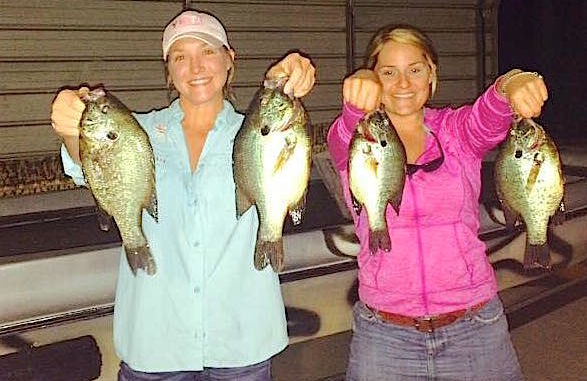
Crickets, worms, artificial baits all producing
Just off the banks of Elliot’s Landing, and not very far from Pack’s Landing and a few other landings, two “islands” are popular with panfish anglers. Hamburger and Hot Dog Islands are easy to get to, and hold large populations of bluegill and shellcracker, especially this time of year.
These “islands” aren’t exactly islands. They are flooded clumps of cypress trees that may actually become islands during droughts, but each clump of tree is distinctly shaped, giving them the appearance of being islands from a distance.
The flooded areas are great for fishing this time of year, as the shade gives fish – and anglers – a break from the heat.
“It’s a fun area to fish. You don’t have to sit around the perimeter of the islands. You can take your boat into the trees and fish all around the base of them, or you can cast small artificial lures in between the trees,” said Michael Warner of Sumter.
These islands are in an area known as “the flats” not far off the Santee River, and anglers are catching a mixture of bluegill and shellcracker here.
“Both species are in here, and on some days, you’ll catch them both no matter what you’re fishing with. On most days though, you will catch far more bluegills on crickets, and far more shellcrackers on nightcrawlers or red worms,” said Warner.
Warner doesn’t have a strong preference for one species over the other, but he has figured out other ways to target each one.
“Shellcrackers are almost always deeper than the bluegills. If you want to catch shellcrackers, either fish on the bottom without a cork, or just fish really deep under a cork. If you want to taget bluegill, then fishing about a foot under a cork will get you started. You can adjust that to go deeper if you’re catching small fish. The bigger bluegills will generally be a good 10 inches deeper than the smaller ones,” he said.
Warner also likes to cast small lures like Beetlespins around the trees, and he said anglers shouldn’t be shy about upsizing these lures.
“I don’t throw anything smaller than a 1/8-ounce Beetlespin, and I will go as big as 1/4-ounce. It keeps the smaller ones off the hook. And I like to let mine sink all the way to the bottom, then raise my rod tip to bring it up before reeling a bit, then drop it down again, and just repeat that over and over. I don’t just reel it straight in like a lot of people do,” Warner said.
“One of my favorite things about fishing with these lures is that you might catch a bluegill on one cast and a shellcracker on the next, even though you’re working it the same way. I also find that it’s almost all bigger fish that hit these lures. The little ones will drive you crazy stealing your live bait, but they don’t seem to want to chase the Beetlespin,” he said.



Be the first to comment